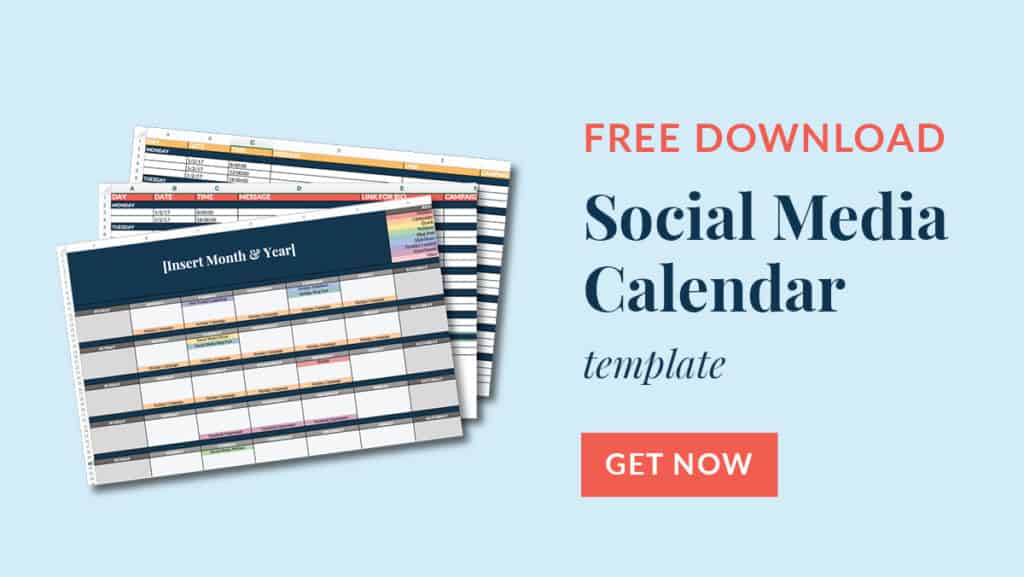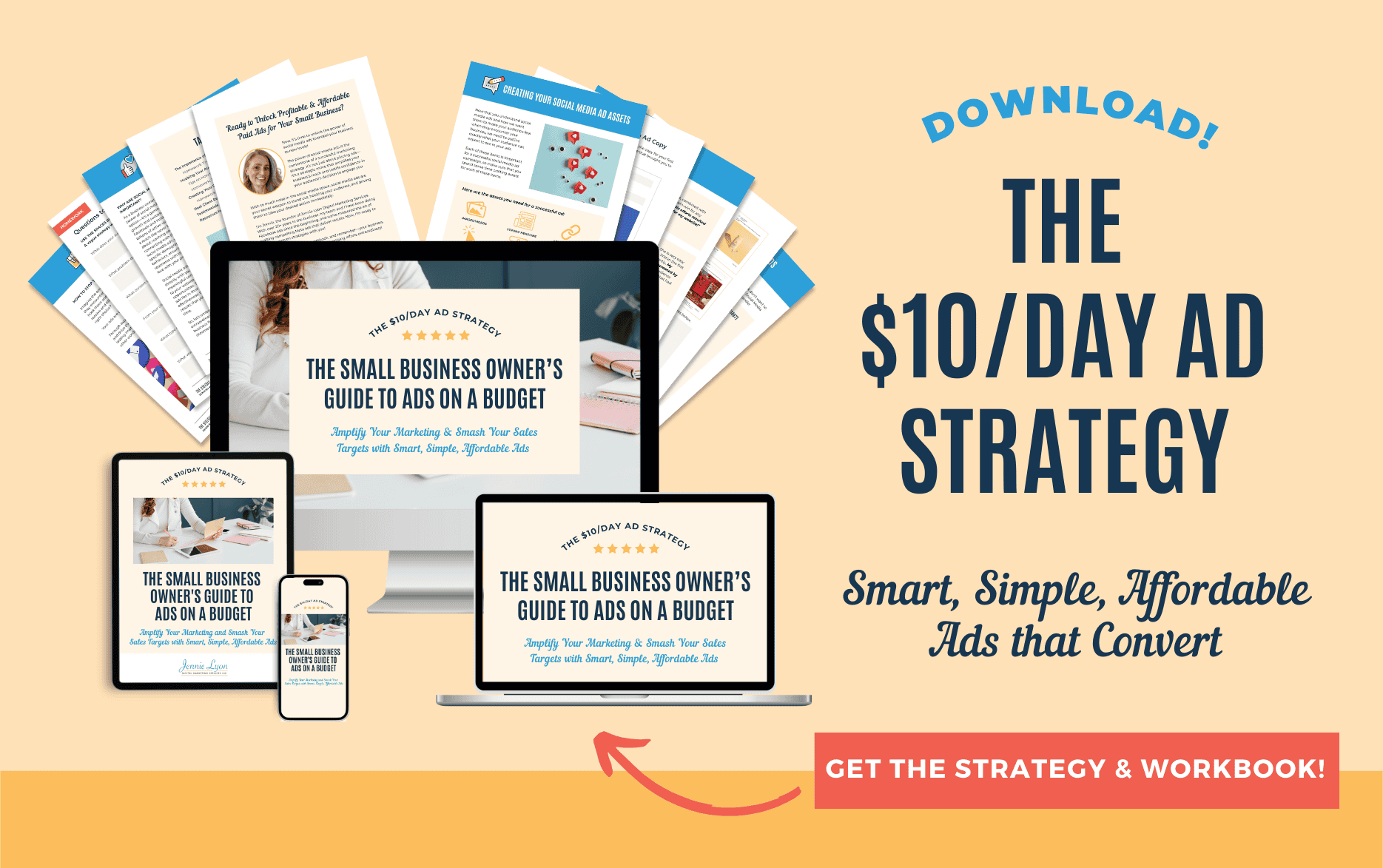5 Simple Strategies For Cranking Out Weekly Content
Cranking out weekly content is no small feat. It requires a deep understanding of your audience, a knack for storytelling, and a strategic approach. But why is content so important? And what strategies are there for cranking out weekly content?
As you most likely know, content is king. It’s the lifeblood of your online presence, fueling your marketing engine.
Good content can attract, engage, and convert your audience. It can turn strangers into followers, followers into customers, and customers into advocates.
But creating good content is easier said than done.
You need to know what your audience wants, deliver it in an engaging and easy-to-digest way, optimize it for search engines and social media, and do all this consistently, week after week.
That’s where content creation strategies come in.
Successful content creators use these methods and techniques to produce high-quality content regularly. They help you plan, create, and distribute your content to maximize its impact and reach.
So, are you ready to take your content creation to the next level?
Let’s dive in.
Understand Your Audience Deeply
Audience Research Techniques
Creating Ideal Client Avatars
Tailoring Content to Audience Needs
Leveraging Audience Feedback
Optimize Content for SEO and Conversion
SEO Best Practices for Content Creation
Crafting Compelling Headlines and CTAs
Using Analytics to Refine SEO Strategies
Develop a Consistent Brand Voice and Style
Establishing Your Brand Voice
Content Style Guidelines
Maintaining Brand Consistency Across Platforms
Plan and Schedule Your Content
Benefits of an Editorial Calendar
Generating and Organizing Content Ideas
Batch Creating and Scheduling Content
Repurpose and Promote Your Content
Maximizing Content Reach Through Repurposing
Effective Content Distribution Channels
Leveraging User-Generated Content and Social Proof
Recap of Key Strategies
This Week’s Homework
1. Understand Your Audience Deeply
The first step in creating killer content is understanding your audience.
Who are they? What are their interests, needs, and pain points? How do they consume content?
These are the questions you need to answer.
The better you understand your audience, the more effective your content will be. You’ll be able to create content that resonates with them, meets their needs, and drives them to action.
But how do you gain this understanding?
Through audience research, let’s dig a bit deeper into that.
Audience Research Techniques
Audience research is the process of gathering and analyzing information about your audience.
There are many ways to do this; here are some of my favorites:
- Surveys and questionnaires can provide valuable insights into your audience’s preferences and behaviors.
- Social media listening: This involves monitoring social media platforms to understand what your audience is talking about and how they feel about certain topics.
- Website analytics: Tools like Google Analytics can provide a wealth of information about your audience, such as their demographics, interests, and browsing behavior.
- Customer interviews: Speaking directly with your customers can give you a deeper understanding of their needs and challenges.
- Competitor analysis: Looking at what your competitors are doing can give you insights into what works and what doesn’t in your industry.
Each of these techniques has its strengths and weaknesses. The key is to use a combination of them to get a well-rounded view of your audience.
Creating Ideal Client Avatars
Once you’ve gathered your audience data, the next step is to create audience personas. These are fictional representations of your ideal customers. They’re based on your collected data and help you visualize your audience. A good persona includes information like demographics, interests, behaviors, and pain points. It also includes a narrative that brings the persona to life. Creating personas can help you empathize with your audience. It can guide your content creation and ensure it is relevant and engaging.
Tailoring Content to Audience Needs
Understanding your audience is not an end in itself. The goal is to use this understanding to tailor your content to your audience’s needs. This means creating content that answers their questions, solves their problems, and fulfills their desires. It means speaking their language, using their terminology, and addressing their concerns. It also means delivering your content in a format and style that they prefer. This could be blog posts, videos, infographics, podcasts, or any other type of content.
The key is to put your audience at the center of your content creation process.
Leveraging Audience Feedback
Finally, understanding your audience is not a one-time task. It’s an ongoing process. Your audience’s needs and preferences can change over time. New trends can emerge, new competitors can enter the market, and new technologies can change how people consume content.
That’s why it’s important to gather and leverage audience feedback continuously. This can be done through surveys, social media comments, blog comments, email responses, and other feedback forms.
By listening to your audience and adapting your content to their changing needs, you can ensure it remains relevant and effective.
In the next section, we’ll look at how to optimize your content for SEO and conversion.
2. Optimize Content for SEO and Conversion
Creating killer content is not just about understanding your audience.
It’s also about making sure that your content is found by your audience.
This is where search engine optimization (SEO) comes in.
SEO is optimizing your content to rank higher in search engine results. The higher your content ranks, the more visibility it gets.
And the more visibility it gets, the more traffic it attracts to your website.
But SEO is not just about attracting traffic. It’s also about attracting the right kind of traffic. This means attracting visitors interested in your content, who find value in it, and who are likely to convert into customers. This is where conversion optimization comes in.
Conversion optimization is optimizing your content to convert visitors into customers. This involves crafting compelling headlines, creating engaging content, and using effective calls-to-action (CTAs).
In the following sections, we’ll delve deeper into these topics.
SEO Best Practices for Content Creation

FREE RESOURCE: Small Business SEO Checklist
- Keyword research involves identifying the keywords your audience uses to search for information related to your content.
- Keyword optimization involves incorporating these keywords into your content naturally and relevantly.
- Meta tags: These HTML tags provide information about your content to search engines. They include the title tag, meta description, and header tags.
- Link building involves linking other websites to your content, boosting your search engine rankings.
- User experience: This involves making your content easy to read and navigate, which can improve your search engine rankings.
- Mobile optimization involves making your content accessible and user-friendly on mobile devices, a ranking factor for search engines.
- Content freshness: This involves regularly updating your content to keep it relevant and up-to-date, which can improve your search engine rankings.
Each of these practices plays a crucial role in SEO. By implementing them, you can increase the visibility of your content, attract more traffic, and improve your conversion rate.
Crafting Compelling Headlines and CTAs
Your headline is the first thing people see. It grabs their attention and entices them to read your content. A compelling headline can distinguish between a visitor reading your content and ignoring it.
So, how do you craft compelling headlines? By making them clear, concise, and intriguing, having powerful words that evoke emotion, offering a benefit, using numbers, and asking questions.
But a compelling headline is not enough. You also need compelling CTAs. A CTA is a prompt that encourages your visitors to take a specific action.
This could be downloading a resource, signing up for a newsletter, purchasing, or any other action that aligns with your goals.
A compelling CTA is clear, concise, and action-oriented.
It uses persuasive language, creates a sense of urgency, and offers a clear benefit.
By crafting compelling headlines and CTAs, you can increase your content’s engagement and conversion rate.
Using Analytics to Refine SEO Strategies
SEO is not a set-it-and-forget-it process. It requires ongoing monitoring and refinement. This is where analytics come in.
Analytics tools like Google Analytics can provide valuable insights into your SEO performance.
They can show you which keywords are driving traffic to your site.
- Which pages rank high in search results?
- Which pages are attracting the most visitors?
- Which pages are driving the most conversions?
By analyzing this data, you can identify what’s working and what’s not, identify opportunities for improvement, and make data-driven decisions to refine your SEO strategies.
In the next section, we’ll look at how to develop a consistent brand voice and style.
3. Develop a Consistent Brand Voice and Style
Your brand voice and style play a crucial role in content creation. They help distinguish your brand from others, create a consistent experience for your audience, and build trust and loyalty with them.
This section will explore how to develop a consistent brand voice and style.
We’ll examine how to establish your brand voice, create content style guidelines, and maintain brand consistency across platforms.
Establishing Your Brand Voice
Your brand voice is your brand’s personality. It’s how your brand communicates with your audience, and it’s reflected in your content’s tone, language, and style. To establish your brand voice, you need to understand your brand.
- What is your brand’s mission?
- What are your brand’s values?
- What is your brand’s personality?
Once you understand your brand, you can define your brand voice.
- Is it formal or casual?
- Is it serious or humorous?
- Is it professional or friendly?
By defining your brand voice, you can ensure that your content resonates with your audience and reflects your brand’s identity.
Content Style Guidelines
Content style guidelines are a set of rules that guide the creation of your content. They ensure consistency in your content’s tone, language, and style. They cover grammar, punctuation, spelling, formatting, and voice.
Here are some elements to include in your content style guidelines:
- Voice and tone: Define the voice and tone of your content.
- Language: Specify the type of language to use (e.g., formal, casual, technical, non-technical).
- Grammar and punctuation: Set rules for grammar and punctuation.
- Formatting: Set guidelines for formatting elements like headings, lists, and links.
- Imagery: Provide guidelines for using images, videos, and other visual elements.
By creating content style guidelines, you can ensure consistency in your content, enhancing your brand’s credibility and trustworthiness.
Maintaining Brand Consistency Across Platforms
Brand consistency is key to building a strong brand. It ensures that your brand is recognizable across all platforms and that your audience has a consistent experience. You must apply your brand voice and style across all platforms to maintain brand consistency.
This includes your website, blog, social media, email, and other platforms.
It also includes different types of content, like blog posts, videos, podcasts, and infographics.
Maintaining brand consistency can strengthen your brand’s identity, increase brand recognition, and build a loyal audience.
4. Plan and Schedule Your Content
Planning and scheduling your content is a key part of content creation.
- It helps to ensure a consistent flow of content.
- It helps to manage your content creation process.
- It helps to align your content with your marketing goals.
In this section, we’ll discuss the benefits of an editorial calendar, examine how to generate and organize content ideas and explore how to create and schedule content in batches.
Benefits of an Editorial Calendar
An editorial calendar is a tool for planning and scheduling content. It provides a visual overview of your content plan, helps you keep track of content ideas, deadlines, and publication dates, and coordinates content creation tasks among team members.
Here are some benefits of using an editorial calendar:

FREE RESOURCE: Social Media Calendar
- Consistency: It ensures a consistent flow of content, which can help to keep your audience engaged.
- Organization: It helps to organize your content creation process, making it more efficient and manageable.
- Alignment: It helps to align your content with your marketing goals, events, and key dates.
- Collaboration: It facilitates collaboration among team members, ensuring everyone is on the same page.
You can effectively plan and schedule your content using an editorial calendar, leading to better content and improved results.
Generating and Organizing Content Ideas
Generating and organizing content ideas is a crucial part of content planning.
It involves brainstorming content topics that resonate with your audience, researching keywords and trends, and organizing your content in a coherent way.
Here are some techniques for generating content ideas:
- Audience research: Understand your audience’s needs, interests, and challenges to develop relevant content ideas.
- Keyword research: Use keyword research tools to find popular and relevant keywords in your niche.
- Competitor analysis: Look at what content your competitors are creating to get ideas and inspiration.
- Trend analysis: Keep an eye on industry trends and news to generate timely and relevant content ideas.
Once you have a list of content ideas, you can organize them in your editorial calendar.
- You can categorize them by topic, format, or stage in the buyer’s journey.
- You can prioritize them based on their relevance, potential impact, or ease of creation.
By generating and organizing content ideas, you can ensure a steady flow of relevant and engaging content for your audience.
Batch Creating and Scheduling Content
Batch-creating content involves creating multiple pieces of content in one go.
It’s a time-efficient way to create content.
It allows you to focus on one task at a time, reducing the cognitive load.
For example, you can spend one day researching and outlining all your content for the week. The next day, you can write all the drafts. The following day, you can edit and finalize all the content.
Scheduling content involves deciding when and where to publish your content.
You can schedule your content based on the best times to post for your audience and across different platforms to maximize its reach.
By batch creating and scheduling content, you can streamline your content creation process and ensure a consistent flow of content.
The next section will discuss how to repurpose and promote your content.
5. Repurpose and Promote Your Content
Creating content is just the first step. To maximize its value, you need to repurpose and promote it. Repurposing content involves reusing existing content in a new format or context. Promoting content involves distributing it across various channels to reach a wider audience.
This section discusses how to maximize content reach through repurposing, explores effective content distribution channels, and examines how to leverage user-generated content and social proof.
Maximizing Content Reach Through Repurposing
Repurposing content is a smart way to maximize its value.
It allows you to reach a wider audience by presenting the same content in different formats.
For example, a blog post can be repurposed into a video, infographic, podcast, or social media post. Repurposing content also helps reinforce your message by presenting it in different ways. Leveraging existing content can save you time and resources.
Here are some tips for repurposing content:
- Identify your most popular content: This is the content that your audience has found most valuable, so it’s a good candidate for repurposing.
- Choose the right format: Consider your audience’s preferences and the nature of the content when choosing a new format.
- Update the content: Ensure it is still relevant and accurate when repurposing.
- Promote the repurposed content: Don’t forget to promote the repurposed content to reach a wider audience.
By repurposing content, you can extend its lifespan, reach a wider audience, and get more value from your content creation efforts.
Effective Content Distribution Channels
Promoting your content is crucial to get it in front of your audience.
There are many channels you can use to distribute your content.
These include your website, email newsletters, social media platforms, and guest posting sites. Each channel has its strengths and weaknesses and may reach a different segment of your audience.
Here are some effective content distribution channels:
- Your website: This is the primary home for your content. Make sure your content is easy to find and navigate.
- Email newsletters: This is a direct line to your audience. You can use it to share your latest content and engage your subscribers.
- Social media platforms can help amplify your content and reach a wider audience. Choose the platforms that your audience uses most.
- Guest posting sites can help you expand your reach and build your authority. Choose reputable sites in your niche.
Promoting your content across various channels can increase its visibility, reach a wider audience, and drive more traffic to your site.
Leveraging User-Generated Content and Social Proof
User-generated content (UGC) and social proof can be powerful tools for promoting your content. UGC refers to any content your users create, such as reviews, testimonials, or social media posts. Social proof is evidence that others have valued your content, such as likes, shares, or comments.
Both UGC and social proof can enhance the credibility of your content.
They can help build trust with your audience and encourage more engagement and sharing of your content.
Here are some ways to leverage UGC and social proof:
- Encourage your users to create and share content about your brand.
- Showcase user reviews and testimonials in your content.
- Highlight social media posts from your users in your content.
- Show the number of likes, shares, or comments on your content.
Leveraging UGC and social proof can enhance the credibility and appeal of your content, leading to more engagement and conversions.
In the next section, we’ll recap the key strategies and next steps for content creators.
That’s a Wrap
We’ve covered a lot of ground in this article. We’ve explored five key strategies for creating killer content each week. These strategies can help you produce engaging and high-quality content consistently. They can improve your content creation process. And they can lead to better conversion rates and a stronger online presence.
Recap of Key Strategies
- Understand your audience deeply. This involves conducting audience research, creating audience personas, tailoring content to audience needs, and leveraging audience feedback.
- Optimize your content for SEO and conversion. This involves following SEO best practices, crafting compelling headlines and CTAs, and using analytics to refine your SEO strategies.
- Develop a consistent brand voice and style. This involves establishing your brand voice, creating content style guidelines, and maintaining brand consistency across platforms.
- Plan and schedule your content. This involves using an editorial calendar, generating and organizing content ideas, and batch-creating and scheduling content.
- Repurpose and promote your content. This involves maximizing content reach through repurposing, using effective distribution channels, and leveraging user-generated content and social proof.
This Week’s Homework
Now that you have these strategies, what’s next? Start by assessing your current content creation process. Download our content calendar template and use it to identify areas where you can apply these strategies. Then, map out a plan for implementing these strategies.
Remember, it’s not about doing everything at once. Start small and gradually incorporate these strategies into your process.
Monitor the impact of these strategies on your content quality and conversion rates. Adjust your approach based on the results. Keep learning and experimenting to find what works best for your audience and brand.
With these strategies, you’re well-equipped to create killer content each week. If you need any help at all, please reach out jennielyon.com/chatwithjennie
Happy content creation!
Links for This Episode on cranking out weekly content:
- Content Calendar Template
https://jennielyon.com/contentcalendar - Discover Your Digital Marketing Success Path
https://jennielyon.com/quiz - How to Use our Digital Marketing Team
- Schedule a free call with Jennie today!
https://jennielyon.com/chatwithjennie - How to Use our Digital Marketing Team
https://jennielyon.com/vateam
Get in touch with Jennie:
🔹Free Consultation
https://jennielyon.com/chatwithjennie
🔹Jennielyon.com
🔹Social Media @jennielyonmarketing
Rate, review, and subscribe to Apple Podcasts.
If you like what you hear on the podcast, please consider rating and reviewing my show! Woo Hoo! Click here, scroll to the bottom, tap to rate with five stars, and select “Write a Review.” I would love to hear what episodes you enjoy the most!
If you still need to do so, please subscribe to the podcast. I’ll be adding new content weekly, and if you’re not subscribed, you’ll likely miss out. Subscribe now!






















